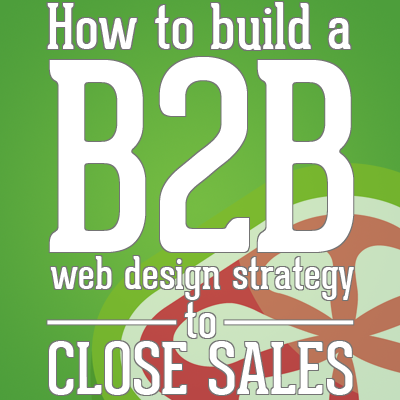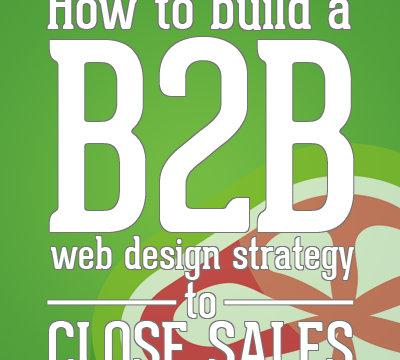 Attempting to build a website or hiring an agency to build a website for you without a design strategy is like trying to build a house without any blueprints. A web design strategy is centered around your business goals and can take your business to business (B2B) website from a static brochure site to a robust content-engine that draws traffic, converts leads, and nurtures sales.
Attempting to build a website or hiring an agency to build a website for you without a design strategy is like trying to build a house without any blueprints. A web design strategy is centered around your business goals and can take your business to business (B2B) website from a static brochure site to a robust content-engine that draws traffic, converts leads, and nurtures sales.
Begin with the End in Mind
Think about how you would like your website should function when the process is complete. Try not to get distracted with what design elements you would like to include, those things will fall into place later. Break down the functions the website will perform.
The ideal website visitor needs to be considered. Why would they be coming to your site? What kind of information are they searching for? What are some common questions they would like answered? Creating a clear picture of your targeted marketing personas can help you create a website that meets their needs.
After you think about what kind of visitor you would like to attract, think about what you would like them to do on the website. This is a very simple question, but one that most B2B websites don’t answer very well.
If you’re a B2B company with a sales team, there is a good chance that you would like to collect contact information from prospects who visit your website. Most people don’t freely share their contact information on the internet, so plan to offer content on your website that visitors would find valuable enough to fill out a form with their name, email, and phone number.
Plan for Speed
The world changes fast. Just a few years ago we were using phone lines to connect to the internet. Today, people are constantly online with over 2 billion smart phones worldwide. This trend has a direct affect on B2B website design strategy; you need to plan for speed. This requires a robust and secure website hosting package. If your website is slow to load, not regularly updated, littered with broken links, not mobile optimized, and volnerable to security breaches, your buisness could be in danger.
Make Connection Easy
Plan to integrate icons that connect to your social platforms right on the home page. When someone wants to get in touch with your business, they may be more comfortable using Twitter than giving you a phone call. Make it easy for prospects to reach out and connect with you on social media. Also clearly display your phone number and a link to directions on the website home page. This will help visitors on mobile and tablet divices to get the information they may be searching for.
If the reader enjoys your contnet so much that they would like to share it with their followers, then by all means make it easy to share. On your company blog, include buttons that allow readers to share your content to Facebook, LinkedIn, Twitter, and Pinterest.
Another good place to add social share buttons is on the thank you pages. After someone has downloaded a piece of content, let them share the landing page with their following. This can be a great way for the news of your contnet pieces to spread through social channels.
Consider Marketing Software
Integrating a marketing software, like Hubspot, into your webdesign strategy brings all of the inbound marketing methods into a central place. This integration gives you control over how prospects experience your website. When you think about your website, think in terms of content and context.
These two questions can help put you in the propper frame of mind: Is the content going to be helpful to my potentual customers? In what context is each piece of content approporate? Using marketing software can help nurture prospects to leads with smart calls to action, smart lists, and automated emails.
Build Your Brand
Lastly, focus on how the website is going to build your brand. Since most people will visit your website before they talk to one of your sales people or drop by your store, it is important to make sure that your brand is well represented. Think about the colors, images, fonts, context of your logo use, and the tone of your website copy.
If you’re ready to get started planning your next website redesign, check out our Website Design Strategy Checklist. Inside you can work through a stream of questions that will help you pin point the right plan for your website.
